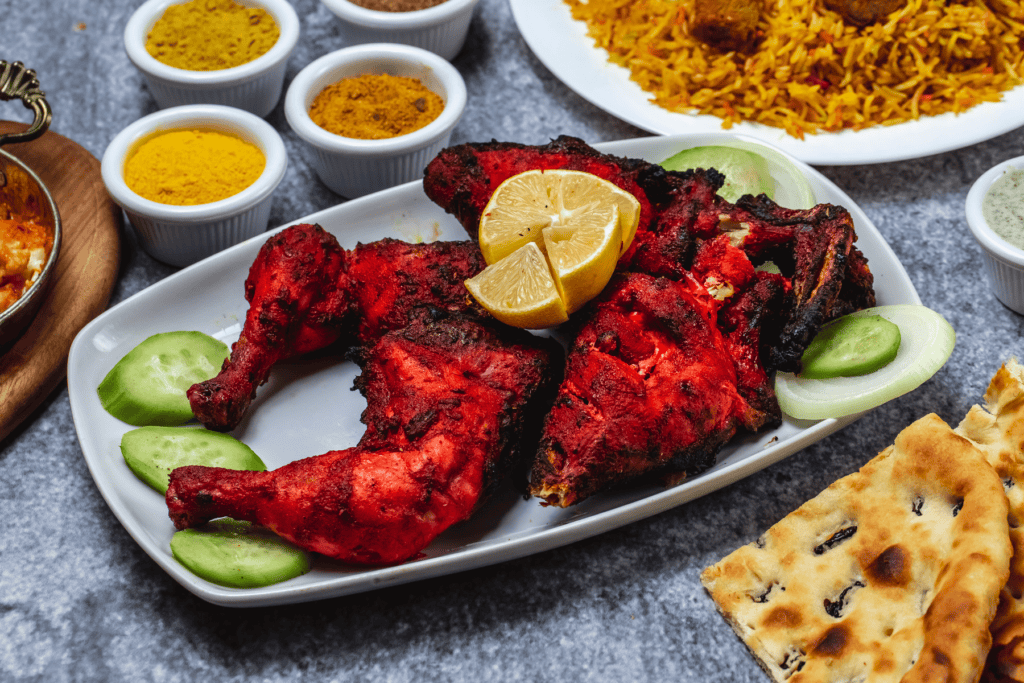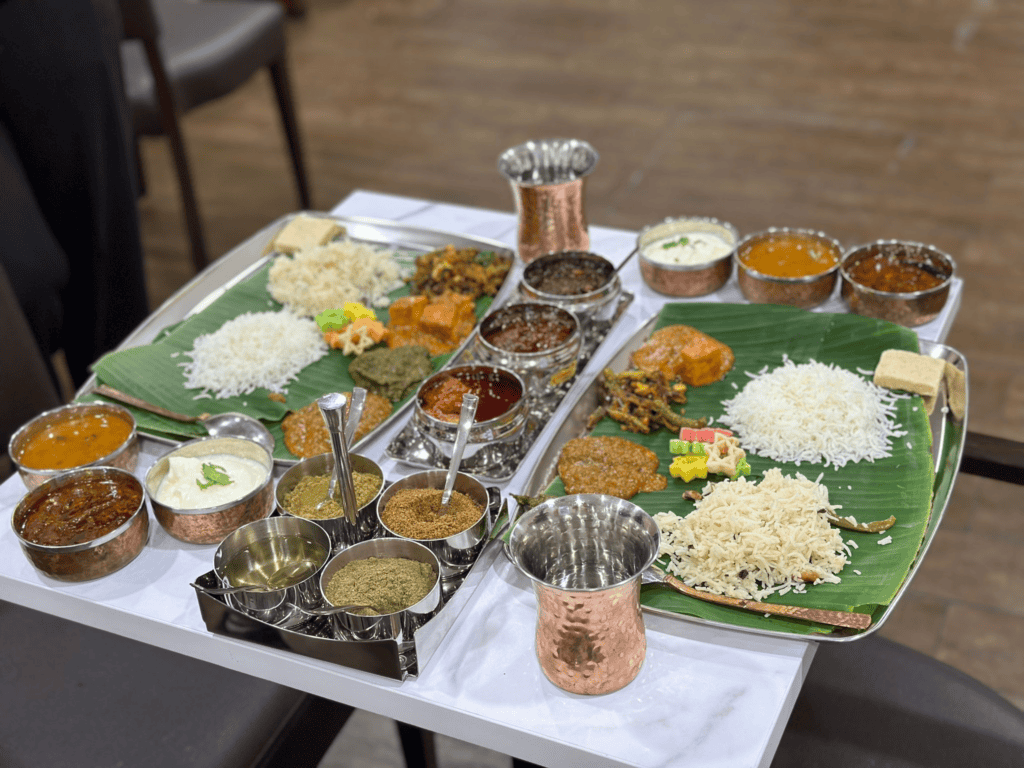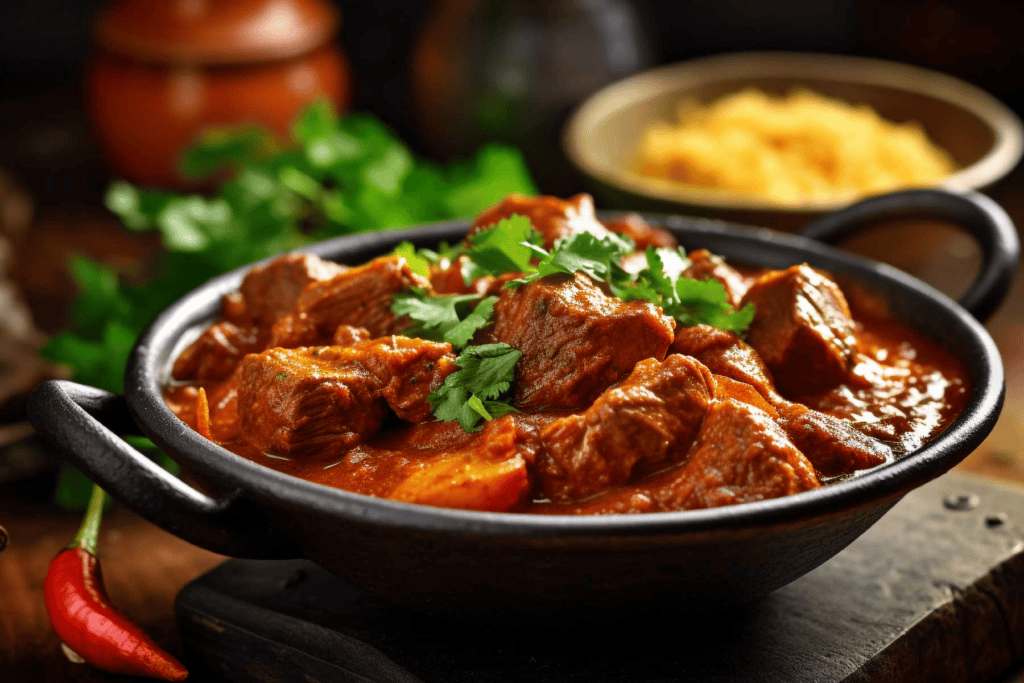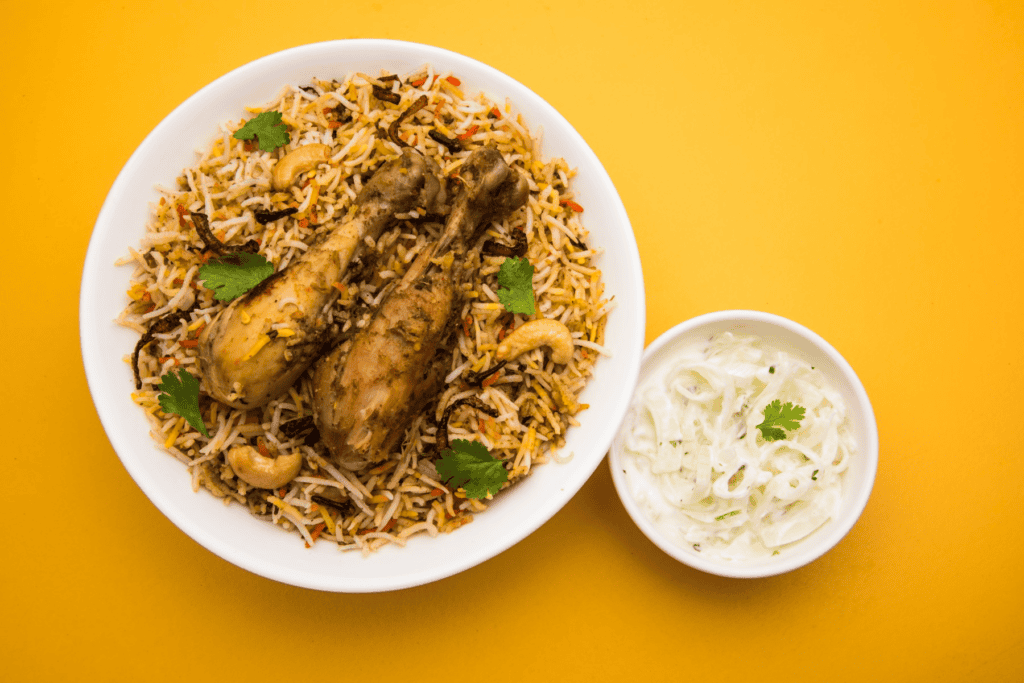Indian buffets have lots of tasty dishes to try. You can taste different flavours and foods from India all in one place. It’s like a food adventure on your plate.
From the spicy curries of the North to the tangy flavours of the South, Indian buffets are a gastronomic journey. They offer an opportunity to sample a variety of dishes, all in one place.
But how do you make the most of your Indian buffet experience? How do you navigate the array of dishes, and what should you look out for?
This guide will help you understand what to expect at an Indian buffet. It will provide tips on finding the best buffets, understanding the cuisine, and making the most of your visit.
What to Expect at an Indian Buffet

In an Indian buffet, there’s an extensive variety of meals. This encompasses starters, principal dishes, accompaniments, and sweet dishes. Each dish is distinctive, exhibiting the diversity in Indian food culture.
Here’s a typical layout of an Indian buffet:
- Appetisers: These could include samosas (fried pastries with a savoury filling), pakoras (deep-fried fritters), and chaat (savoury snacks).
- Main Courses: Expect a variety of curries, both vegetarian and non-vegetarian. You’ll also find biryanis (flavoured rice dishes), and tandoori items (foods cooked in a clay oven).
- Side Dishes: These include a variety of Indian breads like naan and roti, and rice dishes. You’ll also find chutneys and pickles to complement the main dishes.
- Desserts: Indian desserts are typically sweet and rich. Look for items like gulab jamun (milk-solid-based sweet), kheer (rice pudding), and jalebi (deep-fried sweet).
Different regions of India have different dishes. Each buffet can have a unique experience with various foods. Have fun trying new foods!
Finding the Best Indian Buffets

Finding the best Indian buffet near you can be a delightful quest. There are a few factors to consider in your search.
First, look for online reviews. Websites like Yelp and TripAdvisor can provide valuable insights. Check the ratings and read the comments. They can give you a sense of the quality of the food and the service.
Second, consider the location and ambience. A good buffet should be easily accessible and have a pleasant atmosphere. It should make you feel comfortable and relaxed.
Here are some other factors to consider:
- Variety of dishes: A good buffet should offer a wide range of dishes, representing different regions of India.
- Freshness of food: The food should be fresh and replenished regularly.
- Customer service: The staff should be friendly and knowledgeable about the dishes.
- Value for money: The price should be reasonable for the quantity and quality of food offered.
Remember, the best buffet for you is the one that meets your personal preferences and dietary needs.
Using Keywords to Your Advantage
When searching for an Indian buffet, using the right keywords can be helpful. For instance, if you’re looking for a lunch buffet, try searching for “Indian lunch buffets near me”.
Similarly, if you’re interested in a breakfast buffet, use the keyword “breakfast buffet near me”. This can help you find places that offer Indian breakfast options.
Remember, the more specific your search terms, the more relevant the results will be. So, use keywords that match your specific needs and preferences.
Navigating the Buffet: A Strategy Guide

With so many dishes to choose from, it’s easy to feel overwhelmed. But don’t worry, we’ve got some tips to help you make the most of your buffet experience.
First, take a walk around the buffet before you start serving yourself. This will give you an overview of the available dishes. You can identify the ones you want to try and plan your meal accordingly.
Next, start with small portions. This will allow you to taste a variety of dishes without filling up too quickly. Remember, the goal is to experience as many flavours as possible.
Here are some other tips to keep in mind:
- Balance your plate: Try to include a mix of vegetarian and non-vegetarian options. Indian cuisine is known for its rich and diverse vegetarian dishes.
- Try new dishes: Don’t be afraid to step out of your comfort zone. Trying new dishes is part of the buffet experience.
- Enjoy the journey: Take your time to savour each dish. Pay attention to the flavours and textures. This will enhance your dining experience.
The Art of Pacing Yourself
Pacing yourself at a buffet is an art. It’s easy to get carried away by the variety of dishes and end up overeating. But with a little strategy, you can avoid this common pitfall.
Start with a small plate. This will allow you to sample a variety of dishes without overloading your plate. Remember, you can always go back for seconds.
Finally, take your time. Eating slowly not only helps you enjoy the food more, but it also gives your body time to signal when it’s full. This can help prevent overeating.
Exotic Flavours: Understanding Indian Cuisine

Indian cuisine is known for its exotic flavours. These flavours are a result of the unique blend of spices and herbs used in Indian cooking. Understanding these flavours can enhance your buffet experience.
Each region in India has its own distinct cuisine. This diversity is reflected in the variety of dishes you’ll find at an Indian buffet. From the rich, creamy curries of the North to the spicy, tangy flavours of the South, there’s something for everyone.
Here are some common ingredients you’ll find in Indian cuisine:
- Spices: Turmeric, cumin, coriander, and garam masala are some of the most commonly used spices.
- Herbs: Fresh herbs like cilantro and mint are often used to garnish dishes.
- Grains: Rice and various types of bread like naan and roti are staple foods.
- Proteins: Lentils, chickpeas, and other legumes are common in vegetarian dishes. Chicken, lamb, and fish are also widely used.
Spices and Herbs: The Foundation of Indian Dishes
Spices and herbs are the foundation of Indian dishes. They are used not just for flavour, but also for their health benefits. Many Indian spices are known for their anti-inflammatory and antioxidant properties.
Each spice or herb has a unique flavour profile. Some are sweet, some are spicy, and others are earthy or aromatic. The skilful use of these spices and herbs is what gives Indian dishes their complex and layered flavours.
So, next time you’re at an Indian buffet, take a moment to appreciate the symphony of spices and herbs in each dish. It’s a testament to the art of Indian cooking.
Must-Try Dishes at an Indian Buffet

An Indian buffet is a treasure trove of flavours. With a wide array of dishes to choose from, it can be overwhelming to decide what to try. Here are some must-try dishes that you should look out for:
- Biryani: A fragrant rice dish cooked with spices and meat or vegetables.
- Butter Chicken: A creamy, tomato-based curry with tender pieces of chicken.
- Palak Paneer: A spinach and cheese curry that is a vegetarian favourite.
- Samosas: Crispy pastries filled with spiced potatoes and peas.
- Gulab Jamun: A sweet dessert made from milk solids and soaked in syrup.
These dishes show the variety of Indian food. Each dish has a mix of different flavours, textures, and ingredients.
Vegetarian Delights and Non-Vegetarian Treats
Indian cuisine is a paradise for vegetarians. Many Indian dishes are naturally vegetarian, thanks to the country’s cultural and religious practices. From hearty lentil curries to flavourful vegetable biryanis, there’s no shortage of vegetarian options at an Indian buffet.
But that’s not to say that meat lovers are left out. Indian cuisine also boasts a variety of meat-based dishes. From succulent tandoori chicken to rich lamb curries, there’s plenty to satisfy your carnivorous cravings.
Whether you don’t eat meat or love meat, you can find something you like at an Indian buffet. It offers a variety of dishes for every taste and choice.
Discover the Best Indian Buffet Experience at Darbar Wenty

Come and discover the truly exceptional and unparalleled Indian buffet experience that awaits you at Darbar Wenty. Indulge your senses with a wide array of delicious and authentic Indian dishes, lovingly prepared by our skilled chefs. From fragrant curries to tasty snacks and mouth-watering desserts, our buffet has something to satisfy every craving.
Whether you are a seasoned fan of Indian cuisine or looking to explore something new, our buffet is sure to delight your taste buds. Plus, with our warm and welcoming atmosphere, you are guaranteed to enjoy a memorable dining experience at Darbar Wenty.
Due to the popularity of our buffet, we highly recommend making a reservation to ensure you secure a table at your preferred time. Don’t miss out on the chance to savour the best Indian buffet in town – book your table now at darbarwenty.com.au
Conclusion
In conclusion, it is important to consider various factors before making a decision. It is crucial to weigh the pros and cons of each option, taking into account both short-term and long-term consequences. Additionally, consulting with experts or seeking advice from trusted sources can provide valuable insights that may influence the final decision.
Ultimately, the best course of action will depend on individual circumstances and priorities, so it is essential to approach decision-making with careful consideration and a strategic mindset. By carefully evaluating all aspects of the situation and seeking guidance when needed, individuals can make more informed and confident choices that align with their goals and values.
